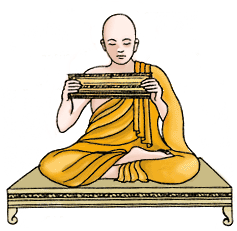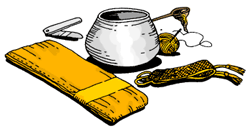
|
|
Ordination
of monks and nuns |
During
the Buddha's time, the ordination gradually developed
from a simple consent to join his Order to a more complex
public ceremony.
The
first few hundred students were personally ordained by
the Buddha. They simply asked him for permission to join
the order and he accepted and invited them in.
Later,
as the Sangha grew, it was not possible for all the students
to see the Buddha, so the Buddha instructed his best students
to ordain some of them. The newcomers had to shave their
heads and (in the case of men) beards and put on robes.
Then they had to formally take refuge in the Buddha, Dharma
and Sangha by reciting the Three Refuges.
Later,
when some less suitable people wanted to join the Order,
ten precepts were added to the Three Refuges.
Later
still, after people complained of the behavior of some
monks, more detailed rules of conduct were introduced
for monks and nuns who completed their novice training.
The total number of rules increased from ten to more than
two hundred and twenty seven.
|
|
Monks
and nuns in different traditions |
Monks
and nuns from different countries learn the Buddha's Teaching
in their own language. Their robes look different as they
come from different traditions, either Theravada or Mahayana.
Monks and nuns from the Theravada tradition come from
Sri Lanka, Thailand, Myanmar, Cambodia, Laos. Those from
Mahayana countries are Tibetan, Chinese, Vietnamese, Korean
and Japanese.
 |

|
|
This Thai monk is studying the
Dharma from a 'leaf book'.
|
Monk's belongings: robes, belt,
water strainer, alms-bowl.
|
| |
|
| Men
become monks. Monks usually get up at five o'clock
in the morning. They study the Buddha's teachings
after breakfast. Sometimes they teach Dharma to people
in the afternoon. In the evening, they meditate. They
keep their minds clean and have kind hearts. |
|
|
| |
| Women
become nuns. They shave their heads. They usually
wear robes of brown, yellow or grey. They also study
the Dharma and meditate. They live simple lives
and work hard for the happiness of people. They
are wise and cheerful, just like the monks. |
|
|
|
|
|
Vietnamese
nun
|
Chinese monk
|
Tibetan monk
|
| |